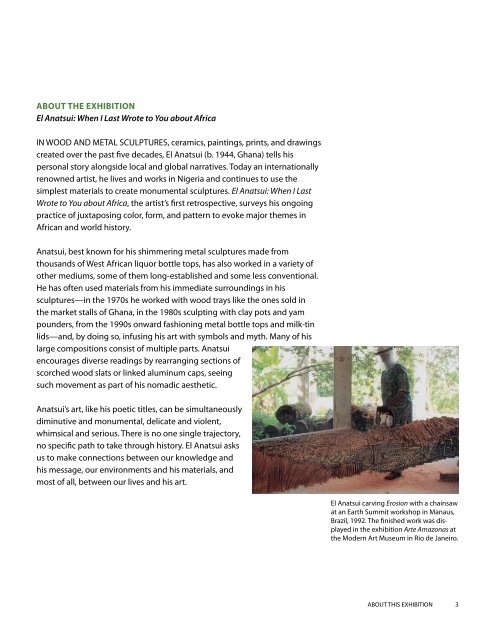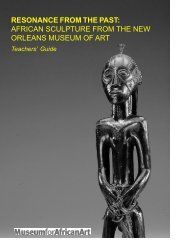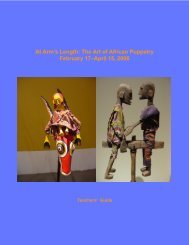El Anatsui
When I Last Wrote to You about Africa - Museum for African Art
When I Last Wrote to You about Africa - Museum for African Art
- No tags were found...
You also want an ePaper? Increase the reach of your titles
YUMPU automatically turns print PDFs into web optimized ePapers that Google loves.
ABOUT THE EXHIBITION<br />
<strong>El</strong> <strong>Anatsui</strong>: When I Last Wrote to You about Africa<br />
IN WOOD AND METAL SCULPTURES, ceramics, paintings, prints, and drawings<br />
created over the past five decades, <strong>El</strong> <strong>Anatsui</strong> (b. 1944, Ghana) tells his<br />
personal story alongside local and global narratives. Today an internationally<br />
renowned artist, he lives and works in Nigeria and continues to use the<br />
simplest materials to create monumental sculptures. <strong>El</strong> <strong>Anatsui</strong>: When I Last<br />
Wrote to You about Africa, the artist’s first retrospective, surveys his ongoing<br />
practice of juxtaposing color, form, and pattern to evoke major themes in<br />
African and world history.<br />
<strong>Anatsui</strong>, best known for his shimmering metal sculptures made from<br />
thousands of West African liquor bottle tops, has also worked in a variety of<br />
other mediums, some of them long-established and some less conventional.<br />
He has often used materials from his immediate surroundings in his<br />
sculptures—in the 1970s he worked with wood trays like the ones sold in<br />
the market stalls of Ghana, in the 1980s sculpting with clay pots and yam<br />
pounders, from the 1990s onward fashioning metal bottle tops and milk-tin<br />
lids—and, by doing so, infusing his art with symbols and myth. Many of his<br />
large compositions consist of multiple parts. <strong>Anatsui</strong><br />
encourages diverse readings by rearranging sections of<br />
scorched wood slats or linked aluminum caps, seeing<br />
such movement as part of his nomadic aesthetic.<br />
<strong>Anatsui</strong>’s art, like his poetic titles, can be simultaneously<br />
diminutive and monumental, delicate and violent,<br />
whimsical and serious. There is no one single trajectory,<br />
no specific path to take through history. <strong>El</strong> <strong>Anatsui</strong> asks<br />
us to make connections between our knowledge and<br />
his message, our environments and his materials, and<br />
most of all, between our lives and his art.<br />
<strong>El</strong> <strong>Anatsui</strong> carving Erosion with a chainsaw<br />
at an Earth Summit workshop in Manaus,<br />
Brazil, 1992. The finished work was displayed<br />
in the exhibition Arte Amazonas at<br />
the Modern Art Museum in Rio de Janeiro.<br />
ABOUT THIS EXHIBITION 3





